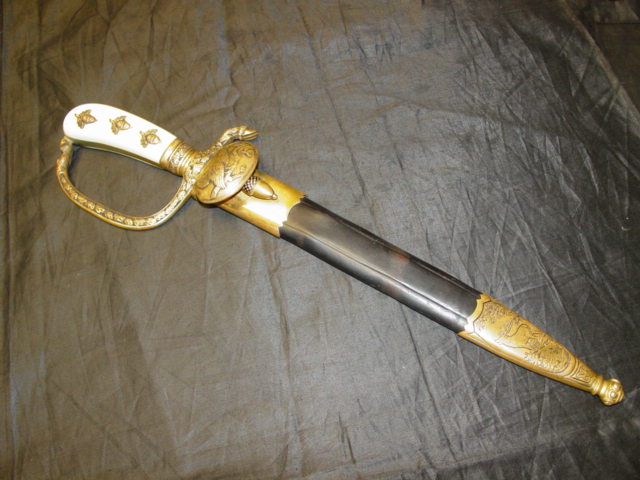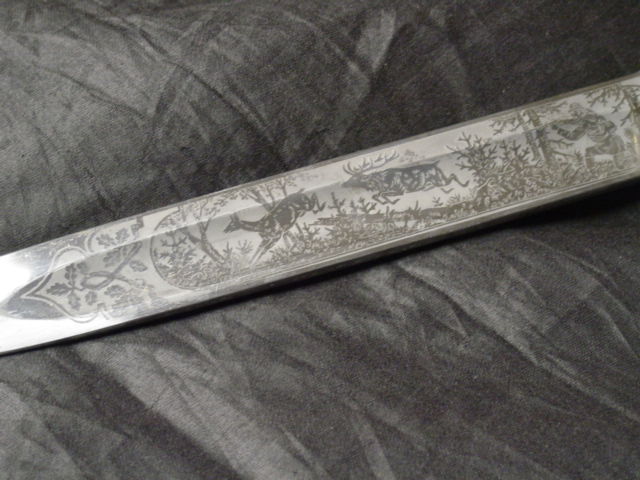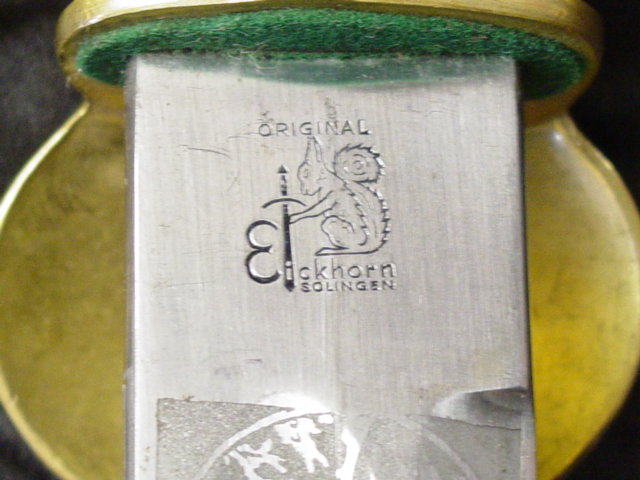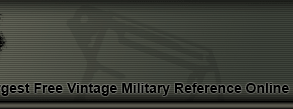|
WWII GERMAN DAGGER - HUNTING CUTLASS
The hunting cutlasses were used by hunting clubs during WWII. Their primary purpose was
ornamental. They were worn by their owners at parties and other special events. It was a symbol
of pride to indicate membership to a particular organization or to brag about hunting feats.
Some of the hunting cutlasses were adorned with swastika edgings to show party affiliation or
loyalty. Like many other private organizations at the time, it was beneficial to tow the party
line.
THE CUTLAS DESIGN
The design of the hunting cutlas was always lavish. They were always highly adorned with multiple
components. It seems like the only limit was how much the owner was willing to spend. The design
of the cutlas was not standard. Every organization could select a different type of construction.
For the purpose of this page we will describe the sample shown here, knowing that the description
will not fit the different variations.

|
This page is a recognition and identification guide for German bayonets. Multiple
detailed photos of a specific sample are provided. Descriptions point out specific
points that should be noted.
One of the most commonly asked questions is "How much is my German bayonet worth?".
A price guide is included here to address this question. The value of the Nazi bayonets is
reviewed over a period of several years. A trend can be observed. The present worth
of the police sword in the collector's market is illustrated.
This service is provided free of charge to the visitor/enthusiast courtesy of
MilitaryItems.com,
a company dedicated
to the preservation of military history and to providing quality military antiques and
collectibles to museums, institutions and the general public.
|
|

THE BLADE
The design of the blade varied from cutlas to cutlas. Some of them were single edge while others
were double edge. The one featured on this page consisted of a single edge. The blade was
heavily adorned with etchings depicting the type of game the person liked to hunt.
The base of the blade is stamped with the manufacturer's logo.
Which consisted of the image of a squirrel sitting and holding a sword. The word "Original" is
written just abobe the squirrel. The name of the manufacturer
"Eickhorn" is placed below the figure. The name of the town "Solingen" is written just below the
manufacturer's name. This indicates the town where the cutlas was built. Solingen was well
renown as a city that produced a large number of edge weapons.

THE HANDLE
The design of the hunting cutlas handle was of clamshell type. White handle with three gold metal
acorns evenly placed on one side. The pommel blends with the handle. The Crossguard has a neck
which is covered with foliage design. One side of the crossguard converts into a "D" handle
that connects to the pommel. The other side angles downward and ends in the shape of a deer hoof.
The clamshell is adorned with a bird standing on the branch of a tree. The handle is very
elaborate in construction.

Many German edge weapons are currently
reproduced.
It is becoming more difficult to be able to tell the fake ones from the real ones because
the quality of the reproductions is improving. The collector must become familiarized with
the construction style and materials employed in the manufacturing of this item.
Attention to the details is critical in order to be able to determine the authenticity of
the collectible.
If you have an interest is seeing other edge weapons of the Third Reich, you can do so by going
to our
WWII German daggers and Swords
identification guide, Where we cover blades from the Heer (Army), Navy (Kriegsmarine), Air Force
(Luftwaffe) and other organizations.
| 






